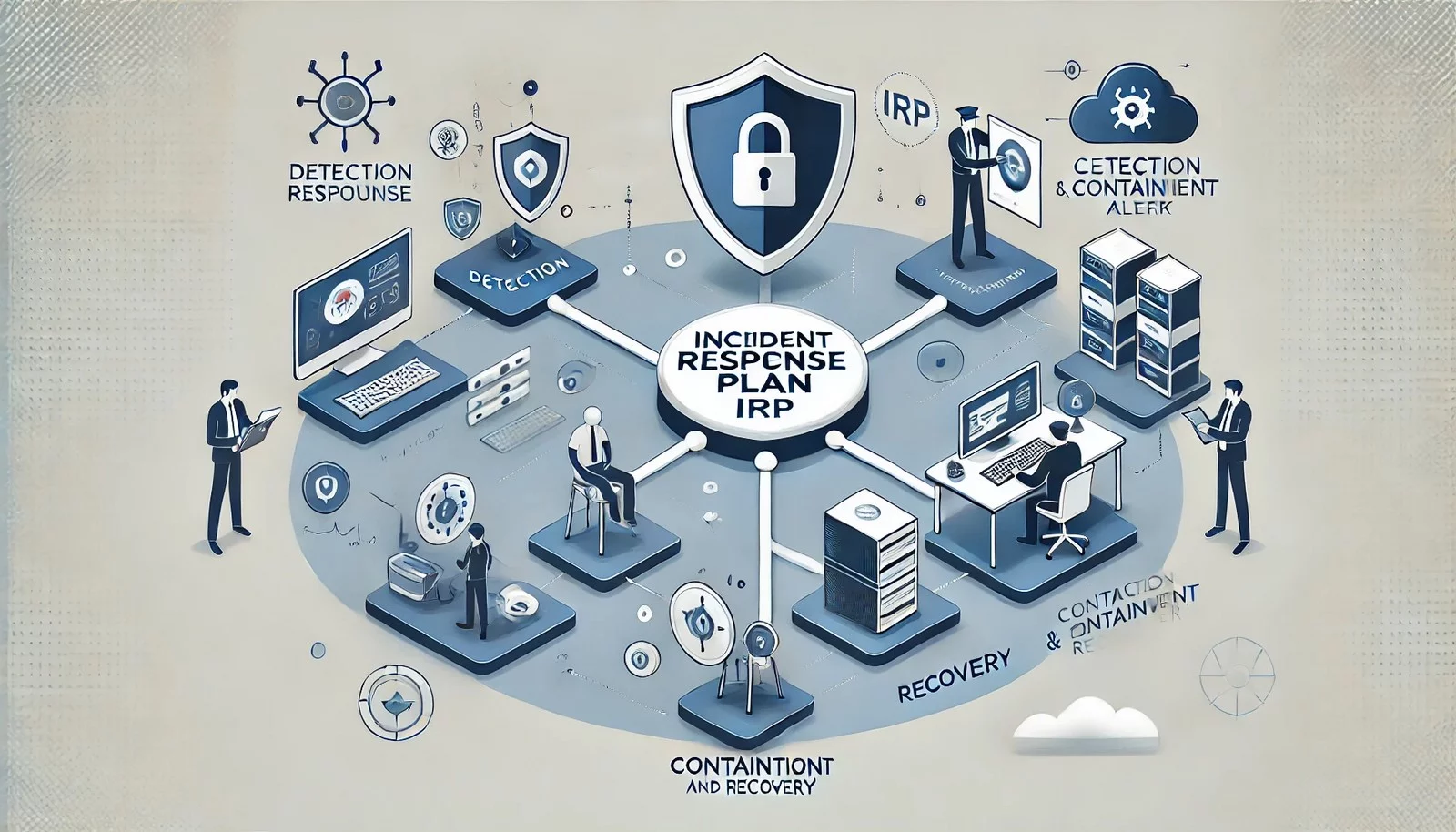Incident Response Plan

(Representational Image | Source: Dall-E)
Quick Navigation:
- Incident Response Plan Definition
- Incident Response Plan Explained Easy
- Incident Response Plan Origin
- Incident Response Plan Etymology
- Incident Response Plan Usage Trends
- Incident Response Plan Usage
- Incident Response Plan Examples in Context
- Incident Response Plan FAQ
- Incident Response Plan Related Words
Incident Response Plan Definition
An Incident Response Plan (IRP) is a structured approach detailing how an organization responds to security incidents, breaches, and cyber threats. It includes predefined procedures for identifying, containing, mitigating, and recovering from incidents, ensuring minimal disruption to operations. IRPs are essential for cybersecurity resilience, typically consisting of phases such as preparation, detection, analysis, containment, eradication, recovery, and post-incident review.
Incident Response Plan Explained Easy
Imagine a fire drill at school. If a fire starts, everyone knows what to do—teachers lead students outside, fire alarms go off, and firefighters arrive quickly. An Incident Response Plan works the same way but for computer security. It helps organizations know exactly how to react when hackers attack or a virus spreads, so they can stop the damage fast.
Incident Response Plan Origin
The concept of incident response evolved from military strategies used to counter unexpected attacks. In cybersecurity, the approach gained traction in the late 20th century as businesses began relying heavily on digital infrastructure. The Computer Emergency Response Team (CERT) at Carnegie Mellon University, founded in 1988, played a key role in formalizing IRP methodologies.
Incident Response Plan Etymology
The term "incident" originates from Latin incidentia, meaning "falling upon" or "happening." "Response" comes from Latin respondere, meaning "to answer or react." Combined, they denote a structured reaction to unforeseen events.
Incident Response Plan Usage Trends
With the rise of cyberattacks, IRPs have become a fundamental part of organizational security strategies. The adoption of zero-trust security models, automation in incident detection, and AI-driven responses have enhanced IRP effectiveness. Regulatory compliance, such as GDPR, HIPAA, and NIST standards, further pushes businesses to maintain robust IRPs.
Incident Response Plan Usage
- Formal/Technical Tagging:
- Cybersecurity
- Risk Management
- Business Continuity - Typical Collocations:
- "incident response team"
- "cybersecurity incident response"
- "developing an incident response plan"
- "incident response framework"
Incident Response Plan Examples in Context
- A financial institution executes its Incident Response Plan after detecting an unauthorized transaction attempt.
- A government agency follows its IRP to contain a malware outbreak before it spreads across critical systems.
- A healthcare provider initiates its Incident Response Plan when patient records are suspected to be compromised.
Incident Response Plan FAQ
- What is an Incident Response Plan?
An IRP is a structured approach for handling security incidents to minimize damage and ensure swift recovery. - Why is an Incident Response Plan important?
It helps organizations react quickly and effectively to cyber threats, reducing downtime and data loss. - What are the key components of an IRP?
Preparation, detection, containment, eradication, recovery, and post-incident review. - Who is responsible for an IRP?
Typically, an Incident Response Team (IRT) or a Security Operations Center (SOC) manages the response. - How often should an IRP be updated?
Regularly—at least annually or whenever new threats or organizational changes arise. - What is the first step in an IRP?
Identifying and detecting a potential security incident. - How do organizations test their IRPs?
Through tabletop exercises, red team simulations, and penetration testing. - What industries need an IRP the most?
All industries benefit, but critical sectors like finance, healthcare, and government are most at risk. - Does an IRP prevent cyberattacks?
No, but it minimizes their impact and speeds up recovery. - How does an IRP differ from a disaster recovery plan?
An IRP focuses on cybersecurity incidents, while a disaster recovery plan addresses broader system failures and natural disasters.
Incident Response Plan Related Words
- Categories/Topics:
- Cybersecurity
- Threat Management
- IT Governance
Did you know?
The first recorded large-scale cyber incident that led to the formalization of Incident Response Plans was the Morris Worm attack in 1988. It spread across ARPANET, infecting thousands of systems and prompting the creation of the Computer Emergency Response Team (CERT).
Authors | Arjun Vishnu | @ArjunAndVishnu

PicDictionary.com is an online dictionary in pictures. If you have questions or suggestions, please reach out to us on WhatsApp or Twitter.
I am Vishnu. I like AI, Linux, Single Board Computers, and Cloud Computing. I create the web & video content, and I also write for popular websites.
My younger brother, Arjun handles image & video editing. Together, we run a YouTube Channel that's focused on reviewing gadgets and explaining technology.
















Comments (0)
Comments powered by CComment